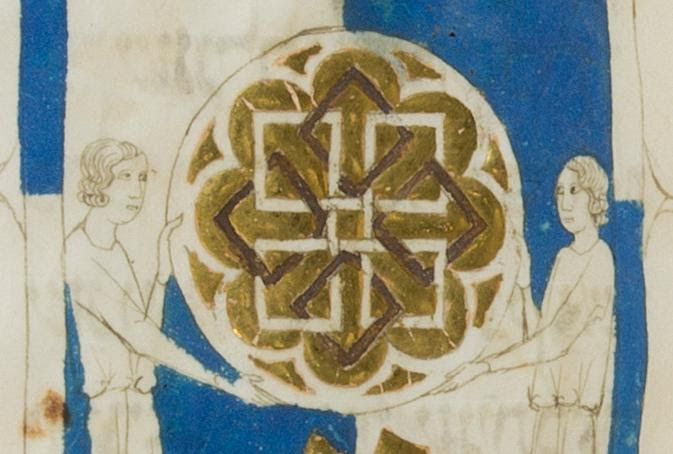
NEW YORK – In conjunction with the observance of Passover this year, two medieval Hebrew manuscripts are on view at The Metropolitan Museum of Art—one at The Met Cloisters and the other at The Met Fifth Avenue. Both works were recently conserved, and are on loan from the Library of the Jewish Theological Seminary (JTS) in New York.One manuscript—the Prato Haggadah—is a new loan and is displayed at The Met Cloisters; the other, a continuing loan at The Met Fifth Avenue, is a Haggadah by Joel ben Simeon, one of the best–known illuminators of medieval Hebrew manuscripts. Intended for use at the Passover table, Haggadot (plural of Haggadah) trace the biblical story of the Exodus and commemorate the Jews’ miraculous escape from slavery in Egypt.
Prato Haggadah
The Prato Haggadah is one of the finest examples of an illuminated Haggadah from 14th–century Spain. The pages on view at The Met Cloisters show two male servants holding a piece of unleavened bread. Its importance in the meal is signaled by its extraordinary size and its golden decoration. The text on the facing page explains that the shank bone on the Seder plate recalls the Passover sacrifice in the time of the Temple, marking God’s sparing (“passing over”) of the houses of the Jews during the plague of the first–born of Egypt. For reasons unknown, the manuscript was not completed; as a result, the refinement of the drawing is especially noticeable.
Joel ben Simeon Haggadah
Joel ben Simeon was an itinerant scribe and artist, active in Italy and Germany, who specialized in the creation of Hebrew manuscripts for personal use, with Haggadot something of a specialty. The example on view, created in Italy in 1454, was written according to the Italian rite. The book is open to a hymn declaring and extolling the sovereignty of God, which is sung during Nirtzah, the last part of the Pesach Seder. The hymn is decorated on the right folio with a motif of four interconnected hares that share ears, forming a square. A similar motif decorates the left folio, with the square formed by the figures of dancing men.
The pages currently on view will be changed after Sunday, May 15.
For more information, visit www.metmuseum.org.

